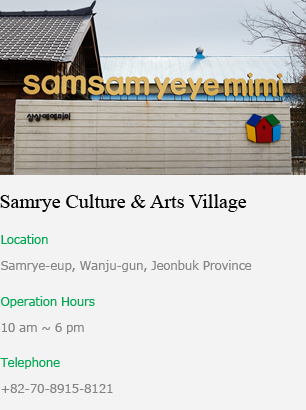
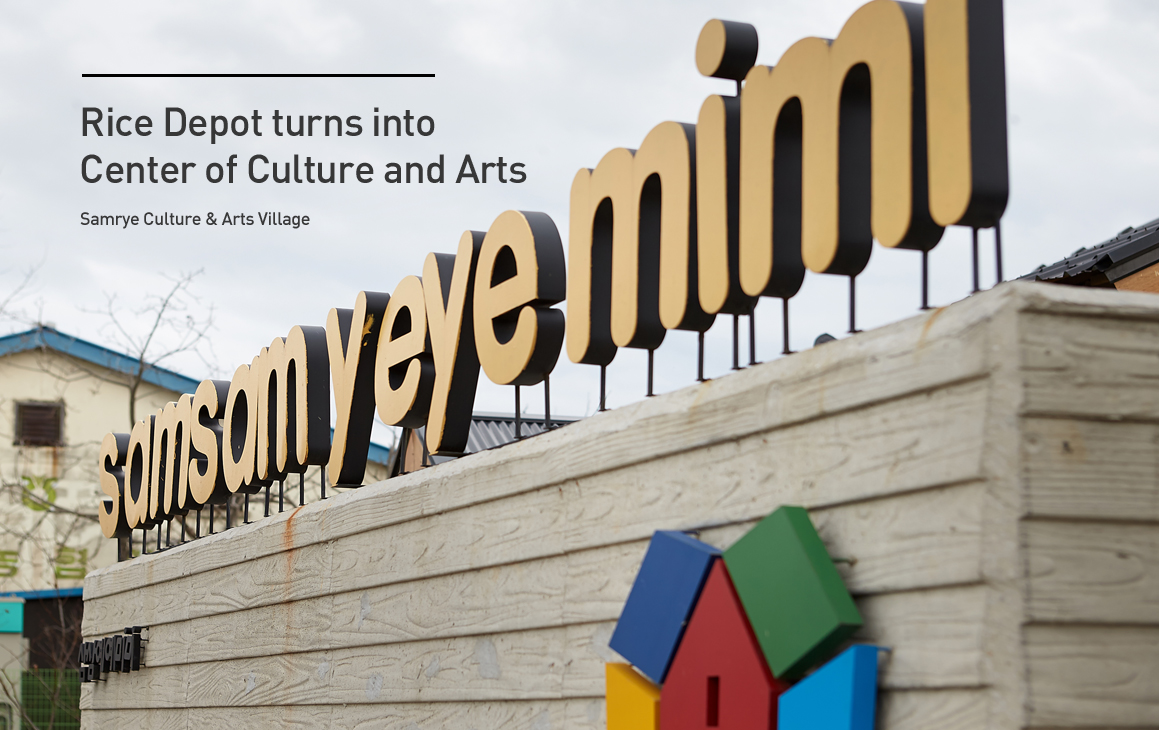
“A nation that forgets its past has no future.” This famous quote naturally comes to mind
when you visit this special village that retains Korea’s colonial history many Koreans are tempted to forget.
The heartbreaking traces of the past are, however, presented here in a stylish venue for culture and arts.
Created with the harmony of classical and modern tastes, the Samrye Culture & Arts Village shows
how it has revived values we should spare from the nation’s painful history.
A Regrettable Use as Rice Depot
The small village called Samrye-eup sits in the vast plains around the upper Mangyeong River with fertile soil and mild climate.
These advantageous geographical conditions, however, turned this village into a center of rice exploitation
during the Japanese colonial era, together with other cities such as Gunsan, Iksan, and Gimje.
Rice produced from the fertile Mangyeong Plains was temporarily stored in the depot in Samrye and
then transported to Gunsan by train and shipped again to Japan from Gunsan.
Once being wetlands, the Samrye village now has sculptures shaped like toads and snails.
And the former rice depot won the Presidential Prize of the 2013 Korea Public Building Awards
and was designated as Registered Cultural Heritage No. 580.
This dramatic transformation was made possible by the Wanju District Office, which decided to embrace the sorrowful history,
and by a number of artists who passionately worked together to build a creative space.
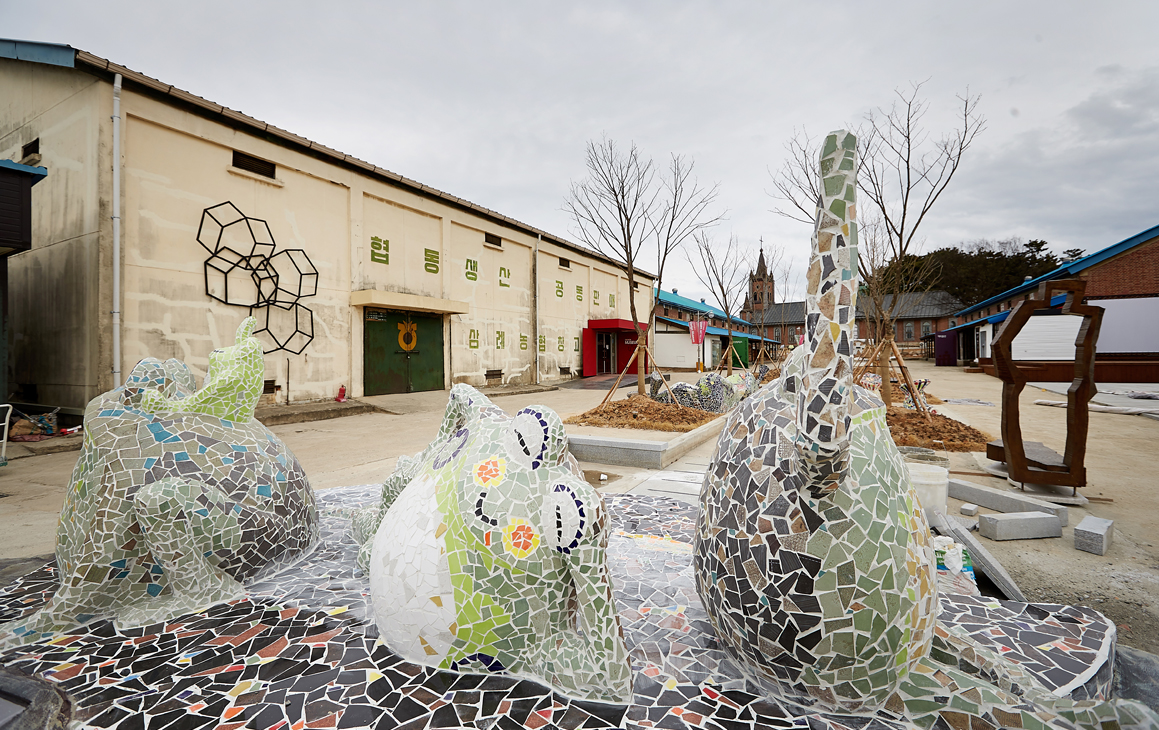
Trees, Books and Scent of a Human and Literary
The first building to visit is the Design Museum, the birthplace of discussion to establish Samrye Culture & Arts Village.
The museum is now displaying artistic works that won prizes at an international competition held by the Korea Association of Industrial Designers.
Feeling regret over the absence of a space to exhibit winning works, a number of artists joined hands in transforming the rice depot into a creative workshop.
From a humidifier designed after water drops and a convenient bicycle that can be folded within 30 seconds,
to a cosmetic product with foundation and makeup base at each end and a hanging washing machine
for a single household, a wide range of practical, novel design products are available on display.

Walking outside from Design Museum, follow the scent of trees around and
you will reach Kim Sang Rym Carpentry Shop with a stack of wood at the entrance.
Inside the workshop is displayed furniture made without a single nail.
You can also see furniture made with Korea’s traditional cabinet-making techniques as well as the tools used by many woodwork masters.
Facing the workshop stands the Book Museum, which provides a selection of books collected by Director Park Dae-heon during his entire life.
One may well have an interest in the textbook pictures drawn by Kim Tae-hyeong with familiar characters
and the chronicles of the 40-year history of the cartoon journals of Song Gwang-yong.
You will not want to miss ‘Honesty Bookshop’ in the corner of the museum, the first unmanned secondhand bookshop in Korea,
where visitors may buy a book from the vast collection including novels, magazines, poetry books, and picture books, for 2,000 won or a little more.
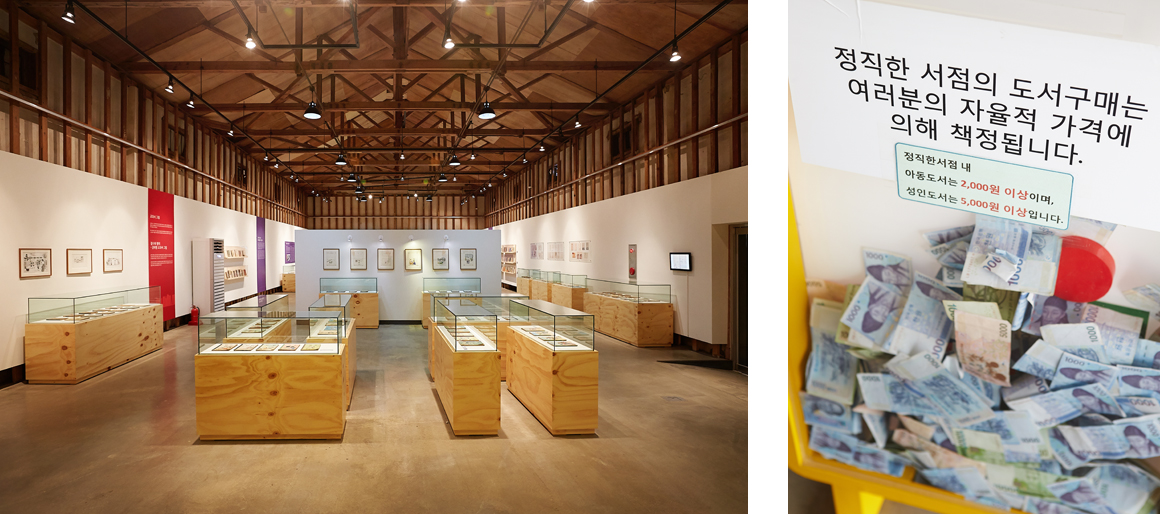
Book Art & Visual Media Art
The Book Art Center offers a number of tools representing book-making technology,
such as lead types and printing machines used for publishing books, and visitors are also invited to make their own books.
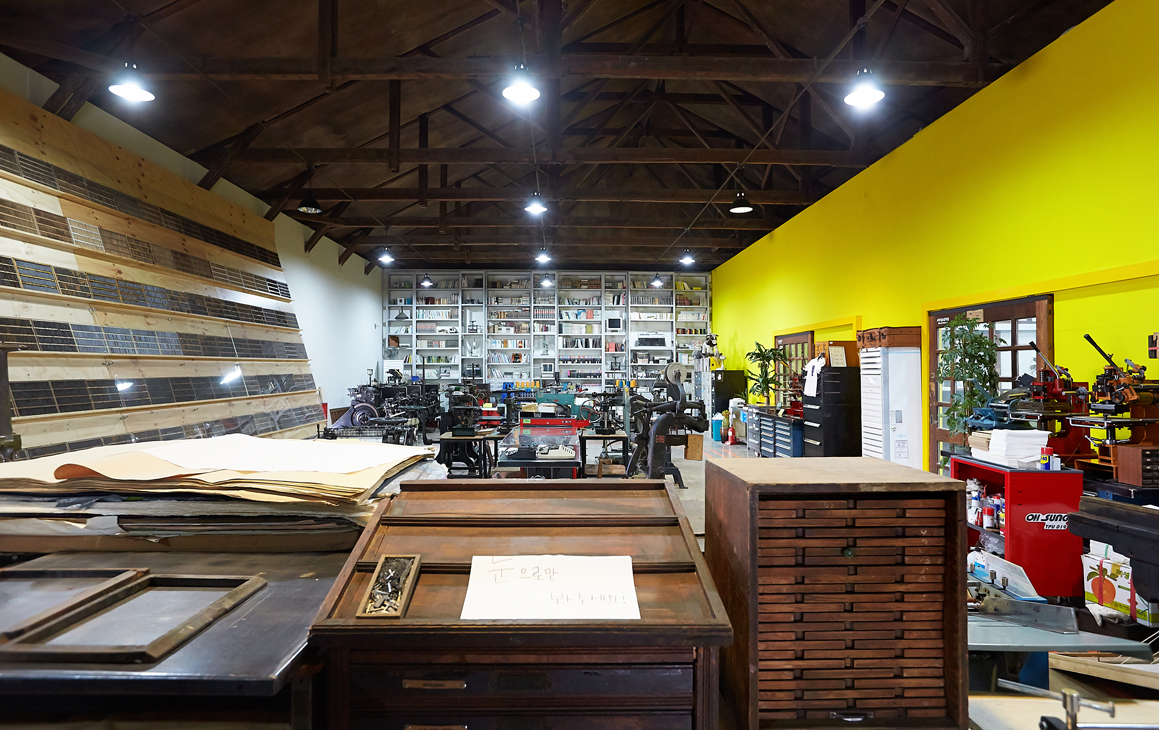
The last rusty door of the former depot opens into an artistic space that cannot be imagined from its exterior.
Visual Media Art Gallery is a venue where a number of media art works are displayed, currently with the theme “Meeting and Conversation.”
Mundane items such as glass tubes, curtains, papers, and steel wires create a whole new set of lights and images with the assistance of a beam projector.
We live oblivious to much, but some things should not be forgotten.
The days of suffering in Samrye may be merely a slice of Korean history, but they are being merged with modern life to create a new chapter of history.
That is perhaps the special power that resonates from Samrye Culture and Arts Village.


